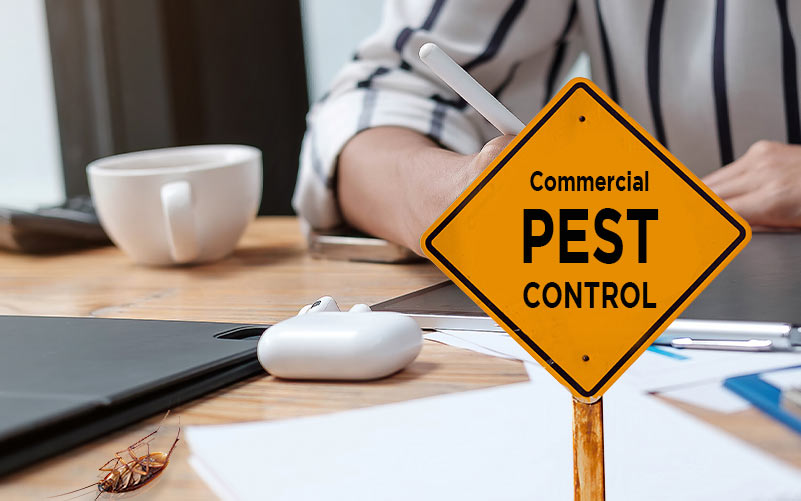Experienced A1 Exterminators Charlotte NC - Fast and Reliable Solutions
Experienced A1 Exterminators Charlotte NC - Fast and Reliable Solutions
Blog Article
Bed Bug Therapy Malfunction: Comparing Chemical Vs. Non-Chemical Solutions
In the realm of pest control, specifically when taking care of the consistent issue of bed bugs, the selection in between chemical and non-chemical therapy options can be a pivotal one. Both approaches use unique benefits and disadvantages, influencing variables such as effectiveness, security factors to consider, and general price. By taking a look at the nuanced information of each method, a more clear understanding of which path to go after in addressing a bed bug problem can be acquired.
Effectiveness of Chemical Therapies
Chemical therapies for bed bug invasions have been extensively identified for their powerful and rapid effectiveness in eliminating these parasites. When considering the efficiency of chemical treatments, it is vital to recognize that they can provide a quick and complete option to a bed pest trouble.
Moreover, chemical therapies have the benefit of using residual results, meaning that they can remain to remove bed pests also after the first application. This recurring activity is especially helpful in combating any type of prospective re-infestations. Furthermore, the rapid activity of chemical therapies can bring relief to individuals facing severe bed pest problems, enabling them to regain control of their home rapidly.
Safety And Security Worries With Chemical Solutions
One crucial aspect that calls for mindful factor to consider when making use of chemical remedies for bed pest therapy is guaranteeing the security of residents and the atmosphere. Exposure to specific chemicals made use of in bed bug treatments can lead to breathing concerns, skin irritation, or various other damaging reactions, especially in people with pre-existing problems or sensitivities.
Furthermore, the environmental impact of chemical remedies is an additional considerable consideration. Some pesticides made use of in bed insect treatments may be dangerous to beneficial pests, wild animals, and environments if they leach right into the dirt or water supply. It is vital to utilize chemical treatments deliberately, adhering to safety and security standards, and thinking about much less hazardous choices to minimize these dangers and ensure the secure and efficient management of bed pest invasions.
Benefits of Non-Chemical Methods
Thinking about the possible safety and security problems and ecological effect connected with chemical options for bed pest therapy, discovering non-chemical approaches provides an encouraging choice with numerous distinctive advantages. Non-chemical treatments are ecologically friendly, as they do not contribute to air or water air pollution, making them a lasting selection for parasite control.
Furthermore, non-chemical services can be efficient in targeting bed bugs, including hard-to-reach areas where chemical treatments may not permeate. Techniques such as warm therapy, vacuuming, heavy steam cleaning, and bed mattress encasements provide thorough removal without using harmful chemicals. In addition, non-chemical strategies can be much less turbulent, needing minimal preparation and permitting quicker reentry into treated locations. In general, deciding for non-chemical bed bug therapy approaches not just prioritizes safety and security and ecological security but also ensures reliable and detailed parasite control.
Limitations of Non-Chemical Treatments

Furthermore, non-chemical treatments commonly need several applications to accomplish successful obliteration. This can be taxing and might not constantly assure total elimination of all bed pests and their eggs, particularly in concealed or hard-to-reach places.
Furthermore, the success of non-chemical treatments greatly counts on correct implementation and thoroughness, which can be challenging for individuals without specialist knowledge. Poor application of non-chemical techniques may result in insufficient eradication, bring about persistent problems and the need for extra therapies.
As a result, while non-chemical therapies have their advantages, it is crucial to acknowledge these restrictions and consider them when determining the most effective strategy for taking care of bed insect problems.
Cost Contrast: Chemical Vs. Non-Chemical Options
Offered the constraints connected with non-chemical therapies, an important aspect to evaluate in the context of bed pest monitoring is the expense contrast between chemical and non-chemical alternatives. In comparison, non-chemical treatments like warmth treatment or steam can be much more expensive, with prices varying from $1,000 to $6,000 for an entire home. While the initial price of chemical therapies may seem reduced, numerous therapies may be required to totally get rid of the invasion, potentially boosting the general expense.
Conclusion

Taking into consideration the possible security concerns and ecological effect associated with chemical remedies for bed insect treatment, discovering non-chemical approaches offers an appealing alternative with numerous distinct advantages.Given the constraints connected with non-chemical therapies, a crucial facet to assess in the context of bed pest administration is the cost contrast between chemical and non-chemical alternatives. In comparison, non-chemical treatments like warm therapy or heavy steam can be more expensive, with prices ranging from $1,000 to $6,000 for a whole home. While the initial price of chemical treatments may seem reduced, numerous therapies may be needed to completely eradicate the problem, potentially boosting the general cost.In final thought, when contrasting chemical and non-chemical bed bug therapy alternatives, it is crucial to think about efficiency, safety, advantages, limitations, and expense.
Report this page